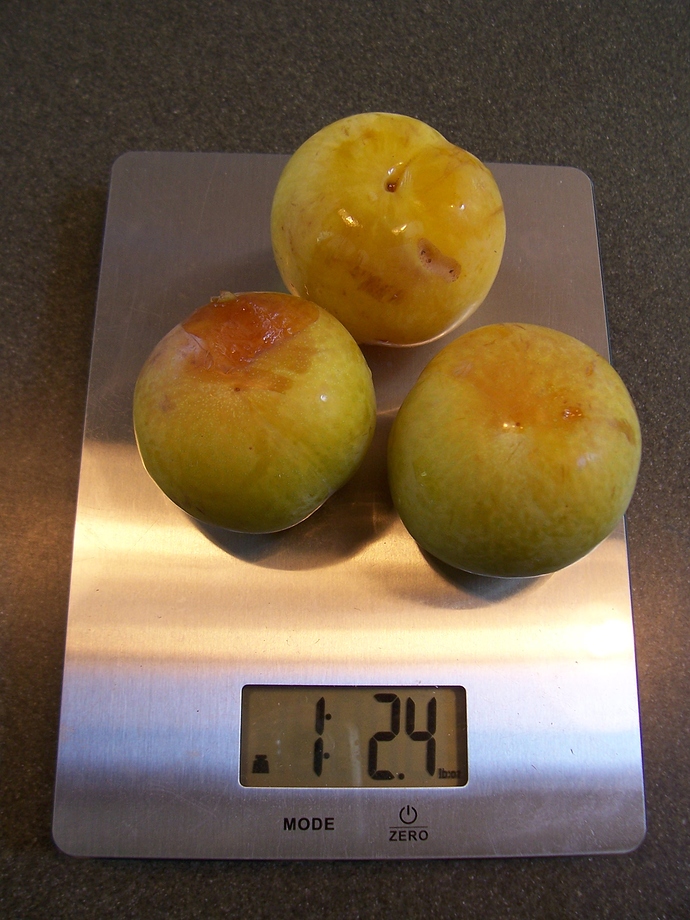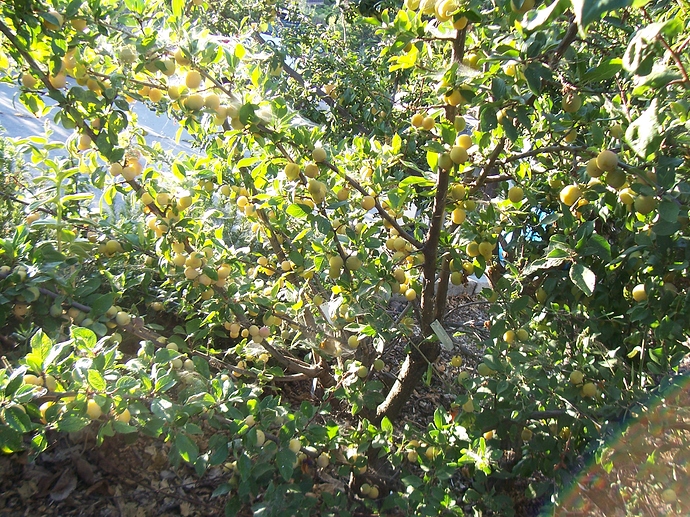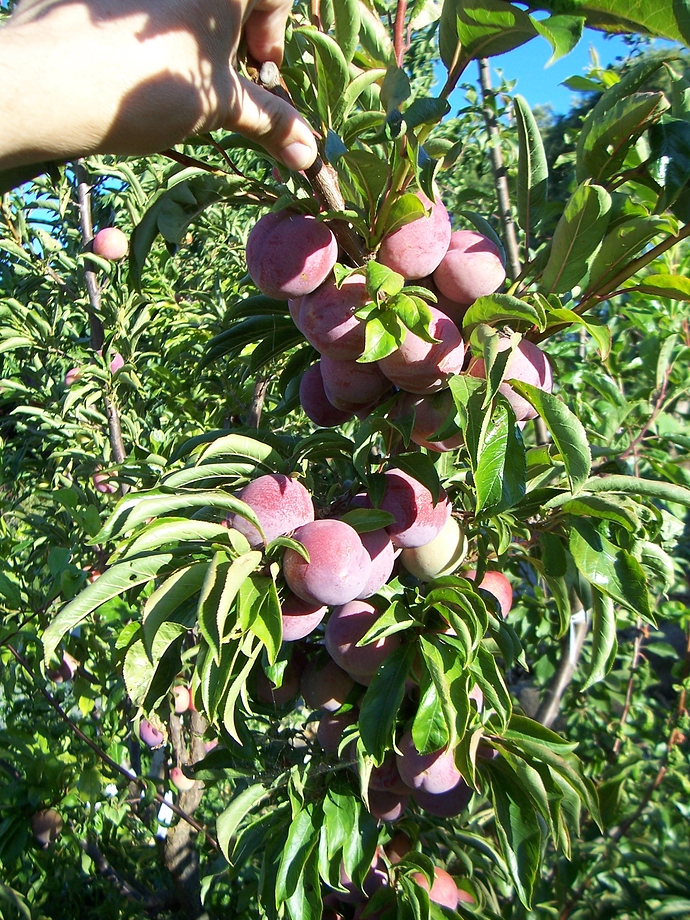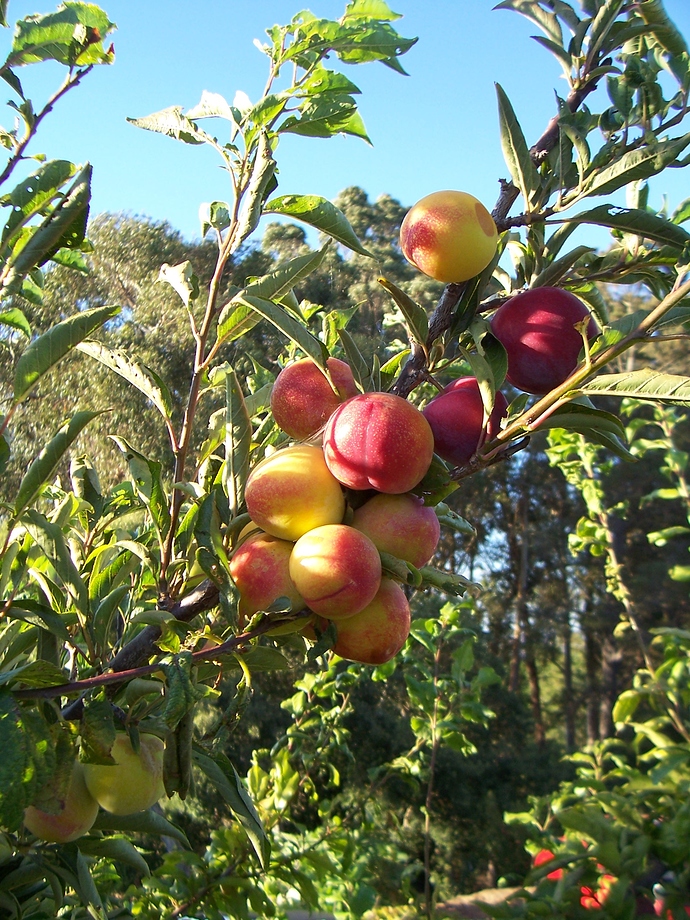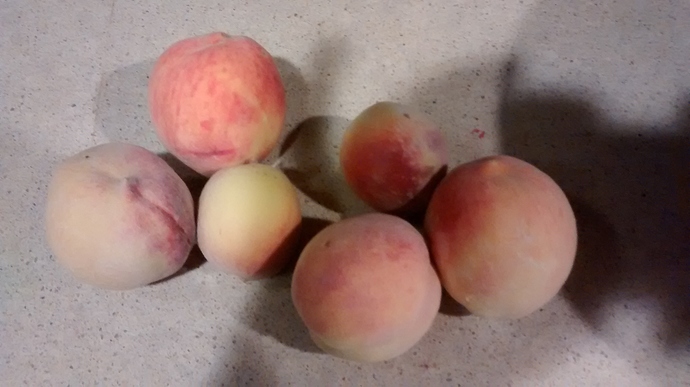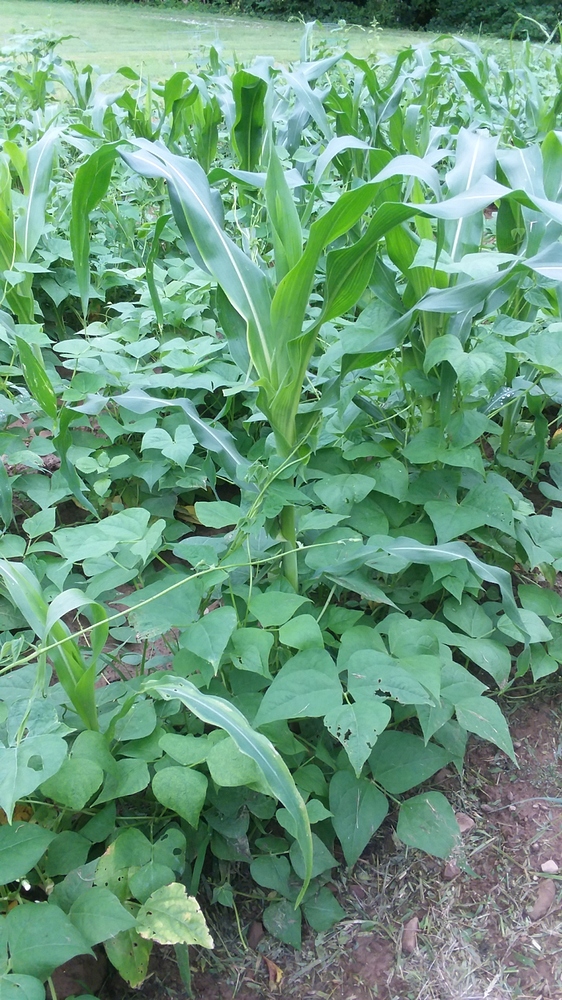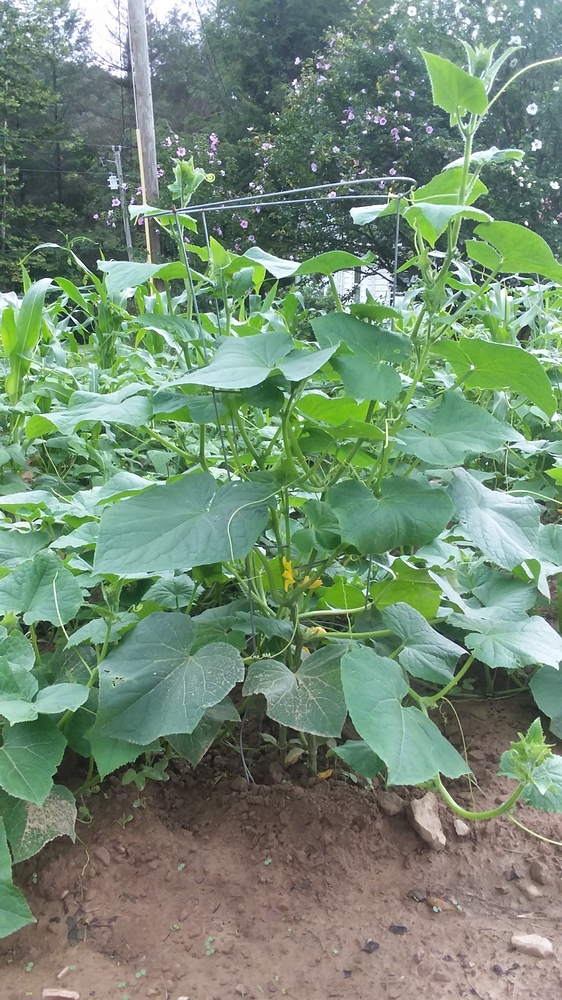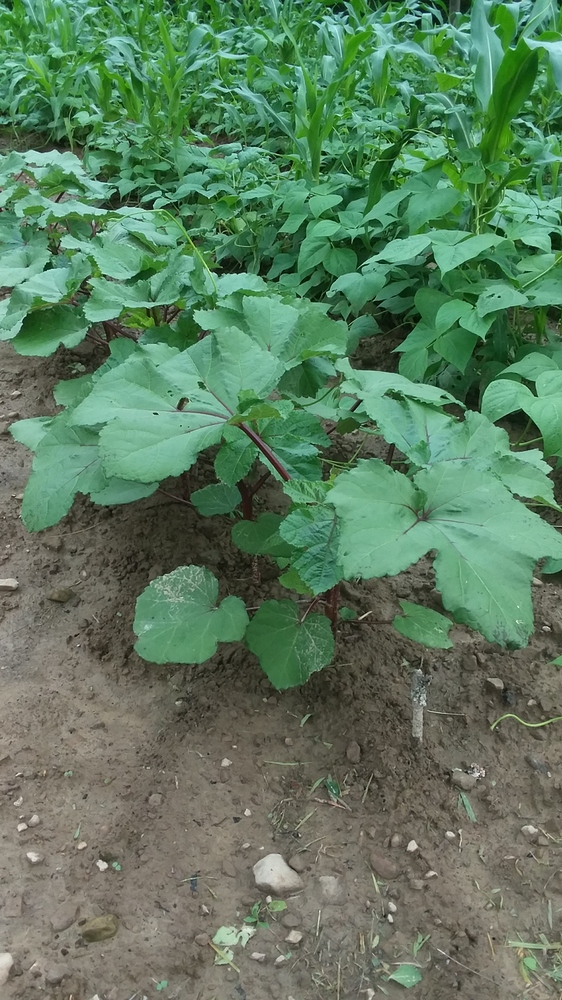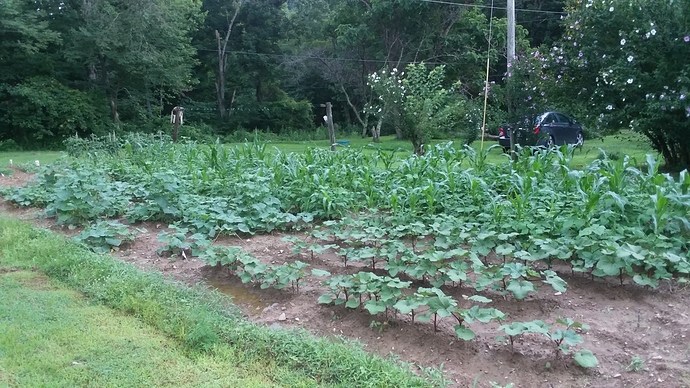I find that the JBs start hitting the cots only when they get really ripe. I’m starting to pick them earlier to forestall this.
Do the milky spore thing! I haven’t had any JBs in several years. With all the new problems that keep cropping up its good to cross off a few old problems. This year I also didn’t have a green aphid problem, the ladybugs achieved enough population that I never needed to spray the aphids. Unfortunately animal control has been a huge problem this year but I can devote most of my energy in that direction. Brown rot is another huge problem of the past permanently crossed off the list with Indar. Fireblight: crossed off, I removed all the highly susceptible trees.
I’ve found that if you can sacrifice one of JB favorites, then they’ll leave the rest alone. They hit my grape vine hard. Nothing else get hit really. My grapes are covered in black rot even after 2 sprays of immunox. I’ve kinda given up on them. Just keeping it so JB will leave everything else alone.
I keep roses for that purpose
Scott,I was thinking of using it,but not sure if the milky spore will hurt earth worms or not?
My main purpose of growing fruits myself is to have fresh tree ripe fruits. If picked too early, not at the best quality, I might just buy them from grocery store, no need to go through all these hassles. In general, I don’t eat frozen fruits, or processed fruits, so making pie, jam, jelly are not what I normally do, or eat. Only in rare occasion, I eat at piece if pie or other dessert, too high in sugar and butter
It is highly specific, only targeting Japanese beetles. I can confirm first-hand it does nothing to earthworms, I have a massive number in my yard, so many that I need to be careful where I step at night as the ground is literally crawling with them.
I used the BT bacteria strain ( one of many) that kills all beetle larvae. I do have tons of worms, so it doesn’t appear to harm them. I also spread crab shells around as bacteria that eat chiton are attracted. These bacteria also eat the chiton in grubs and beetles. After 2 years I have a few Japanese beetles, but the numbers are low. I killed five so far.
Flavor Queen Pluots are raining down from the tree. They started ripening a couple weeks ago and the remaining fruit is at peak ripeness. The ripest ones that are exposed to full sun turn gold. 17 Brix
The Mirabelle Nancy and Septembre plums are turning gold. 26 brix.
Satsuma Plums should be harvestable very soon.
A club of Cambridge Gage European plums. This branch will need another week or two to fully ripen.
Flavor King Pluot is fairly ornamental with its color changes from ripening and sun exposure. These will be ripe when the last of Flavor Queen is finished.
I used it many years ago and no longer see Japanese Beetles but I do have large numbers of Oriental Beetles.
Wowweeee
I hit the JBs on the plum trees a couple weeks ago with my dwindling supply of Sevin and there are no longer enough to constitute a real problem
Its odd your Satsuma are ripening now as mine are also ripening but on the other fruits you are about three weeks ahead. I checked the ACN vs Dave Wilson charts and the same things shows up there – my Satsuma is ripening at the ACN time and yours is ripening at the Dave Wilson time, and the relative times are shifted. Bizarre… It makes me wonder a bit if there may be a sport or something out there. I have the ACN version as I bought the tree from them.
In an attempt to control SWD better this year, I sprayed the remaining blackberries and strawberries, the elderberries, and the second round of raspberries with Spinosad and a sticker last night. I have had my best year so far with the berries (except for strawberries, bad year for strawberries) but I don’t remember when they took over my yard last season. I know they destroyed the everbearing raspberries and strawberries last year.
Anyone know how long a solution of Spinosad will stay good in a spray bottle?
Beautiful fruit. Which ones of those are your favorites, and how would you describe their flavors?
They look so clean, do you spray, or are y’all lucky enough to avoid the difficulties of growing stone fruit back as experienced back east?
It is really hard to pick a favorite. The flavors, texture, and fragrance of different types of plum are so vastly different that sometimes it is difficult to believe that the different cultivars are from the same species of plant.
I don’t think a verbal description of the flavors do the fruit justice, its like trying to describe jazz to to someone who has never heard it. You just have to experience it firsthand.
I tend to prefer the European cultivars over Asian. There are exceptions but the Asian plums and most prunus cerasifera often have a tartness to the skin which I find a bit overpowering. I have a lot of European cultivars and plum/apricot crosses that should come into bearing in the next year or two so I am excited to sample them. This year I have sampled some early ripening Bradley King of the Damsons and Cambridge Gage. Both are excellent but I found the Cambridge Gage had a more interesting flavor with a hint of peach and firm flesh that is very different texture in comparison asian plums, perhaps more similar to the texture of a cherry.
I have only sprayed once, copper dormant spray. I had a terrible aphid problem early in the season but that problem abated when my trees became colonized by dense populations of spiders. I have only seen two out of hundreds of plums with fungal issues. Peaches are problematic though, no spray = no good fruit.
We have not had measurable precipitation here since the first week in April.
Decided to get a few pics of the garden before another round of showers set in. The plot was planted around June 14, late because of a cold, wet spring.
A few tomatoes, red Brandywine and orange KY beefsteak, three of each
Bean vine climbing up corn stalk. It wasn’t my idea, my wife said this is how her family had done it for years.
Cuke vine climbing up tomato cage, most of the vines are on the ground, though. Nothing yet to pick, but plenty of blooms on the plants
A few purple okra plants, first year growing them, doing very well. Seeds from a friend of my Mom’s in OK.
Overall view of patch, about 40 x 65 feet. We haven’t fenced it in yet to keep deer out, but have just had a few cuke and bean plants browsed on. I’m holding off on a fence to see how long I can get away with it.
5 rows of corn, with beans. Three varieties of corn and beans each. Corn is Honey Select, Ambrosia and Kandy Korn. Beans are white and striped half-runners and Rattlesnake pole beans.
Beautiful pictures! They are obviously loving the showers…
Thanks. Yes, they have really took off over the last week. There’s some standing water in the okra section, so we don’t need any more rain, but it’s coming down now, but not too bad.
